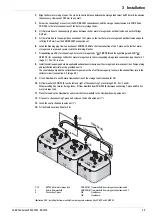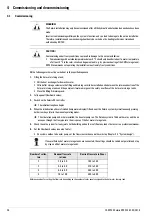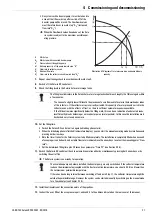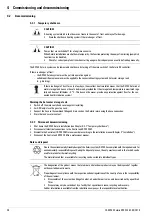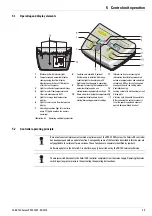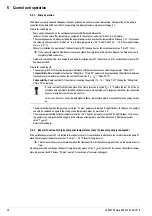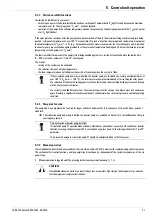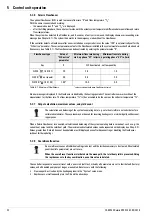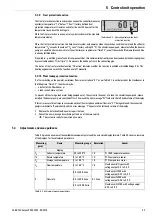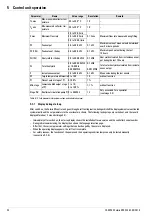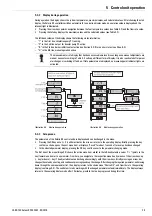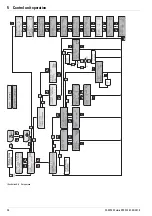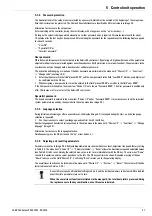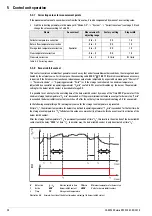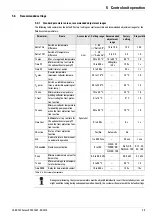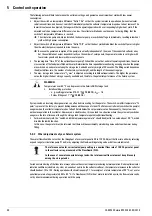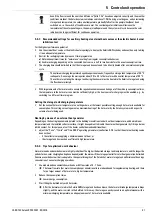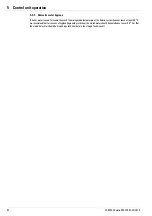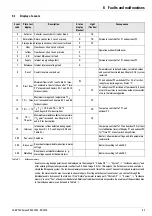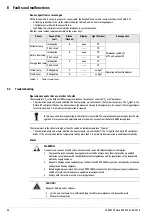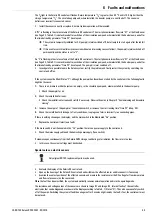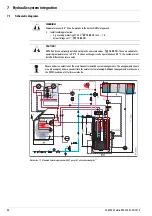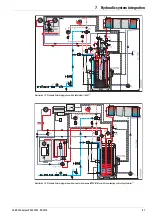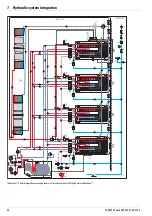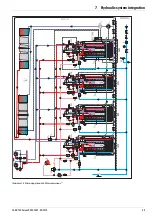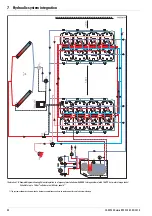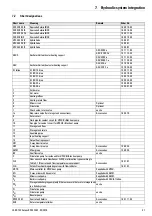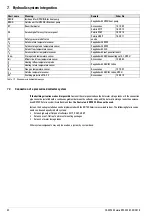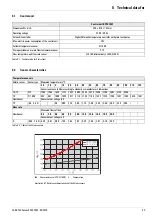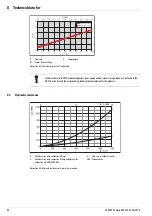
5
x
Control unit operation
39
FA ROTEX Solaris RPS3 25M - 03/2010
5.4
Recommended settings
5.4.1 Standard parameter values, recommended adjustment ranges
The following table summarises the default (factory) settings as well as possible and recommended adjustment ranges for the
Solaris system parameters.
Table 5-5 Overview of parameters
Parameter
Name
Access level Setting range Recommended
adjustment
range
Factory
setting
Step width
Delta T On
Switch-on temperature
difference
User
1...80
(>"Delta Off")
10 to 15 K
15 K
15 K
Delta T Off
Switch-off temperature
difference
1...20
(<"Delta On")
2 to 5 K
2 K
1 K
T
S
max
Max. storage tank temperature
20 to 85 °C
75 to 85 °C
80 °C
1 K
Time P2
Minimum start-up run time for
the optional booster pump P2
10 to 999 s
Filling time
+20 s
150 s
1 s
Time SP
Inhibit time for pumps
Specialist
0 to 600 s
—
30 s
1 s
T
K
max
Booster temperature
(maximum collector tempera-
ture)
20 to 110 °C
—
75 °C
1 K
T
K
perm
Switch-on inhibit temperature
(max. permissible operating col-
lector temp.)
90 to 250 °C
—
95 °C
1 K
T
R
min
Minimum return temperature
10 to 60 °C
—
25 °C
1 K
T frost
Limiting collector temperature
for activating the frost protec-
tion function
0 to 10 °C
—
0 °C
1 K
T
K
save
Minimum collector temperature
for enabling pump operation
when the frost protection func-
tion is active
50 to 80 °C
—
70 °C
1 K
Time frost
Additional start-up run time for
the optional booster pump P2
when the frost protection func-
tion is active
0 to 600 s
—
0 s
1 s
FR active
Status of frost protection
function
Yes/ No
Automatic
No
—
H/A
Automatic return from manual
to automatic operation
1 to 900 l/min
—
30 min
1 min
FLS enabled FlowSensor activation
0 to 100
FLS20: 20
No FLS: 0
With FLS: 100
0, 12, 20,
40, 100
FLS40: 40
FLS100: 100
P min
Minimum momentary output for
burner stop
0.0 to 99.9 kW
—
99.9 kW
0.1 kW
T
S
min
Minimum storage tank tempera-
ture for burner stop
0 to 99 °C
—
99 °C
1 K
Time VBSK
Delay for burner inhibit contact
10 to 600 s
—
120 s
10 s
During commissioning, the system parameters must be adjusted individually to suit the installed system, and
might need fine tuning during subsequent operation. Usually, the system will operate with the default settings.

